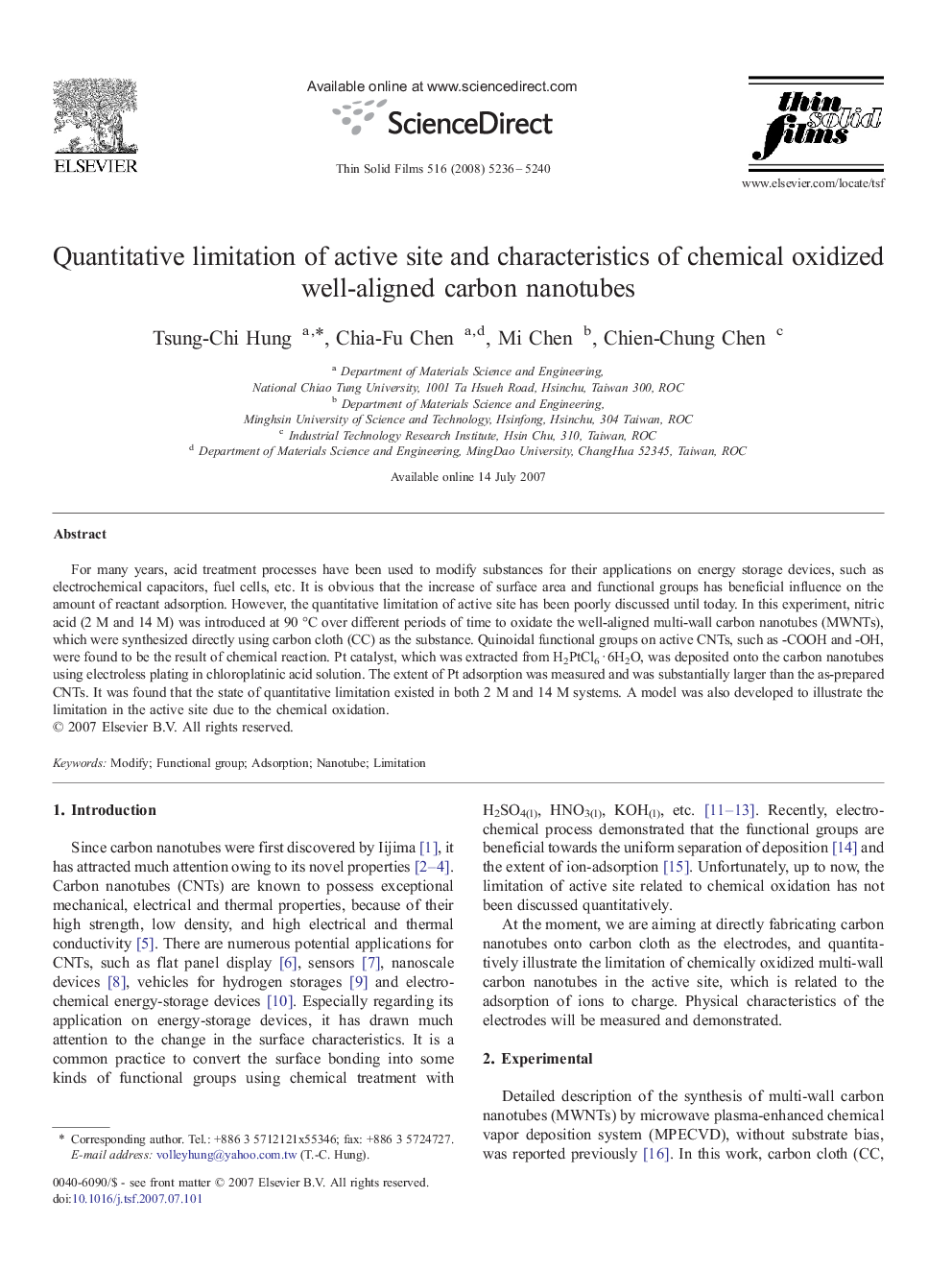| Article ID | Journal | Published Year | Pages | File Type |
|---|---|---|---|---|
| 1674926 | Thin Solid Films | 2008 | 5 Pages |
For many years, acid treatment processes have been used to modify substances for their applications on energy storage devices, such as electrochemical capacitors, fuel cells, etc. It is obvious that the increase of surface area and functional groups has beneficial influence on the amount of reactant adsorption. However, the quantitative limitation of active site has been poorly discussed until today. In this experiment, nitric acid (2 M and 14 M) was introduced at 90 °C over different periods of time to oxidate the well-aligned multi-wall carbon nanotubes (MWNTs), which were synthesized directly using carbon cloth (CC) as the substance. Quinoidal functional groups on active CNTs, such as -COOH and -OH, were found to be the result of chemical reaction. Pt catalyst, which was extracted from H2PtCl6 · 6H2O, was deposited onto the carbon nanotubes using electroless plating in chloroplatinic acid solution. The extent of Pt adsorption was measured and was substantially larger than the as-prepared CNTs. It was found that the state of quantitative limitation existed in both 2 M and 14 M systems. A model was also developed to illustrate the limitation in the active site due to the chemical oxidation.
